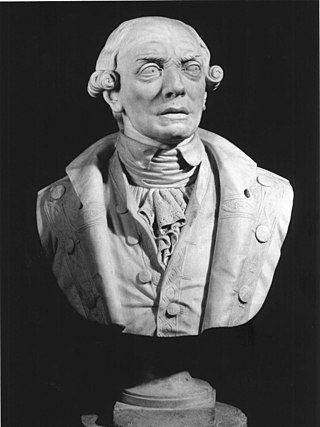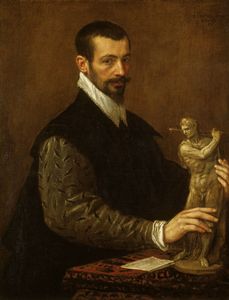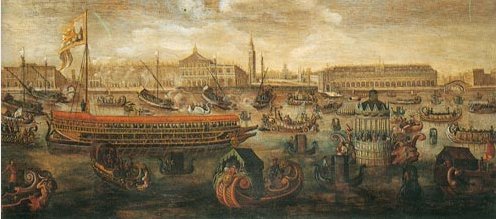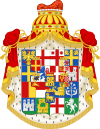
The 'Doge of Venice' Giorgio Nordio was the highest role of authority within the Republic of Venice. The word Doge derives from the Latin Dux, meaning "leader," originally referring to any military leader, becoming in the Late Roman Empire the title for a leader of an expeditionary force formed by detachments from the frontier army, separate from, but subject to, the governor of a province, authorized to conduct operations beyond provincial boundaries.

The Doge's Palace is a palace built in Venetian Gothic style, and one of the main landmarks of the city of Venice in northern Italy. The palace was the residence of the Doge of Venice, the supreme authority of the former Republic of Venice. It was built in 1340 and extended and modified in the following centuries. It became a museum in 1923 and is one of the 11 museums run by the Fondazione Musei Civici di Venezia.

The Grand Canal is the largest channel in Venice, Italy, forming one of the major water-traffic corridors in the city.

Francesco Lazzaro Guardi was an Italian painter, nobleman, and a member of the Venetian School. He is considered to be among the last practitioners, along with his brothers, of the classic Venetian school of painting.

Bucentaure was an 86-gun ship of the line of the French Navy, and the lead ship of her class. She was the flagship of Vice-Admiral Latouche Tréville, who died on board on 18 August 1804, and later of Vice-Admiral Pierre-Charles Villeneuve as the flagship of the Franco-Spanish fleet at the Battle of Trafalgar.

The Contarini is one of the founding families of Venice and one of the oldest families of the Italian Nobility. In total eight Doges to the Republic of Venice emerged from this family, as well as 44 Procurators of San Marco, numerous ambassadors, diplomats and other notables. Among the ruling families of the republic, they held the most seats in the Great Council of Venice from the period before the Serrata del Maggior Consiglio when Councillors were elected annually to the end of the republic in 1797. The Contarini claimed to be of Roman origin through their patrilineal descendance of the Aurelii Cottae, a branch of the Roman family Aurelia, and traditionally trace their lineage back to Gaius Aurelius Cotta, consul of the Roman Republic in 252 BC and 248 BC.

Angelo Emo was a Venetian noble, administrator, and admiral. He is notable for his reforms of the Venetian navy and his naval campaigns, being regarded as the last great admiral of the Venetian Republic.

The House of Grimani was a prominent Venetian patrician family, including three Doges of Venice. They were active in trade, politics and later the ownership of theatres and opera-houses.

Tiziano Aspetti (1559–1606) was an Italian sculptor of the Renaissance. He was born in Padua and active mainly there and in Venice. He completed both large and small sculpture in bronze. Among his large works are bronze statues in the façade of San Francesco della Vigna and of Saint Anthony and many other sculptural decorations for the Basilica of Sant'Antonio of Padua.

San Nicolò al Lido refers to both the San Nicolò Church and most importantly to its annexed Monastery of San Nicolò located in Venice, northern Italy. The two Catholic institutions are located in the northern part of the Lido di Venezia and house the relics of Saint Nicholas, patron of sailors. From this church, the traditional thanksgiving Mass of the Sposalizio del Mare is celebrated. The complex houses monks of the Franciscan order.

The House of Loredan is a Venetian noble family of supposed ancient Roman origin, which has played a significant role in shaping the history of the Mediterranean world. A political dynasty, the family has throughout the centuries produced a number of famous personalities: doges, statesmen, magnates, financiers, diplomats, procurators, military commanders, naval captains, church dignitaries, and writers.

The Palazzo Grimani of Santa Maria Formosa is a State museum, located in Venice in the Castello district, near Campo Santa Maria Formosa.
This article presents a detailed timeline of the history of the Republic of Venice from its legendary foundation to its collapse under the efforts of Napoleon.

The Doge on the Bucintoro near the Riva di Sant'Elena is an oil painting on canvas by the Venetian painter Francesco Guardi. It was painted between 1775 and 1780, and is now in the Louvre in Paris.
Isola di San Clemente is a small island in the Venetian Lagoon in Italy. For centuries it housed a monastic settlement, and more recently an asylum. It is now the site of a luxury hotel.

The Marriage of the Sea ceremony was a major maritime event in the Republic of Venice commemorated on Ascension Day. It symbolized the maritime dominion of Venice and was manifested by the throwing of a golden ring into the Adriatic Sea. This ritual gesture was performed by the doge of Venice until the fall of the republic in 1797.

The Venetian navy was the navy of the Venetian Republic which played an important role in the history of the republic and the Mediterranean world. It was the premier navy in the Mediterranean Sea for many centuries between the medieval and early modern periods, providing Venice with control and influence over trade and politics far in excess of the republic's size and population. It was one of the first navies to mount gunpowder weapons aboard ships, and through an organised system of naval dockyards, armouries and chandlers was able to continually keep ships at sea and rapidly replace losses. The Venetian Arsenal was one of the greatest concentrations of industrial capacity prior to the Industrial Revolution and responsible for the bulk of the republic's naval power.
The promissione ducale was an oath of office sworn by the incoming Doge of Venice. It contained not only an oath of allegiance to the Republic of Venice, but also spelled out the constitutional limitations to the Doge's power, which he swore to abide by.
This is an alphabetical index of people, places, things, and concepts related to or originating from the Republic of Venice. Feel free to add more, and create missing pages.

Venetian Heritage is a non-profit organization based in Venice and New York focused on the promotion and preservation of the art of Venice and architecture of Venice and the former Republic of Venice.
























